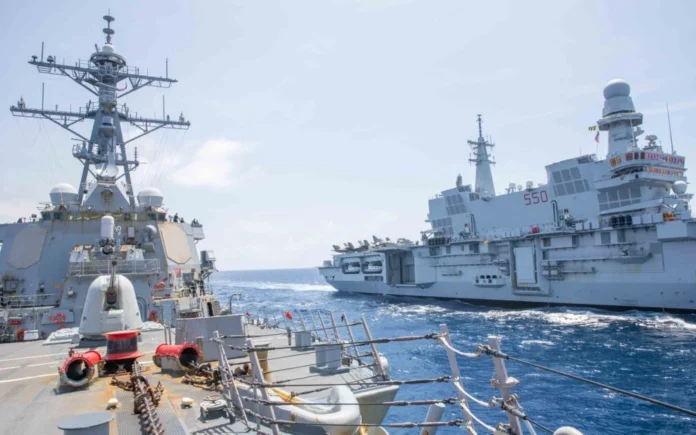The U.S. Navy and Italian Navies and the Royal Australian Air Force carried out four days of drills in the South China Sea last week (Sept 2024) “in support of a free and open Indo-Pacific,” according to a US Navy statement, US Naval Institute News reports.


